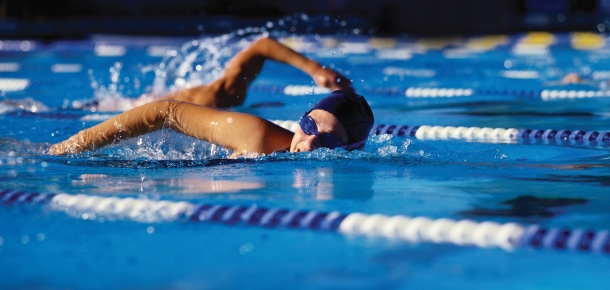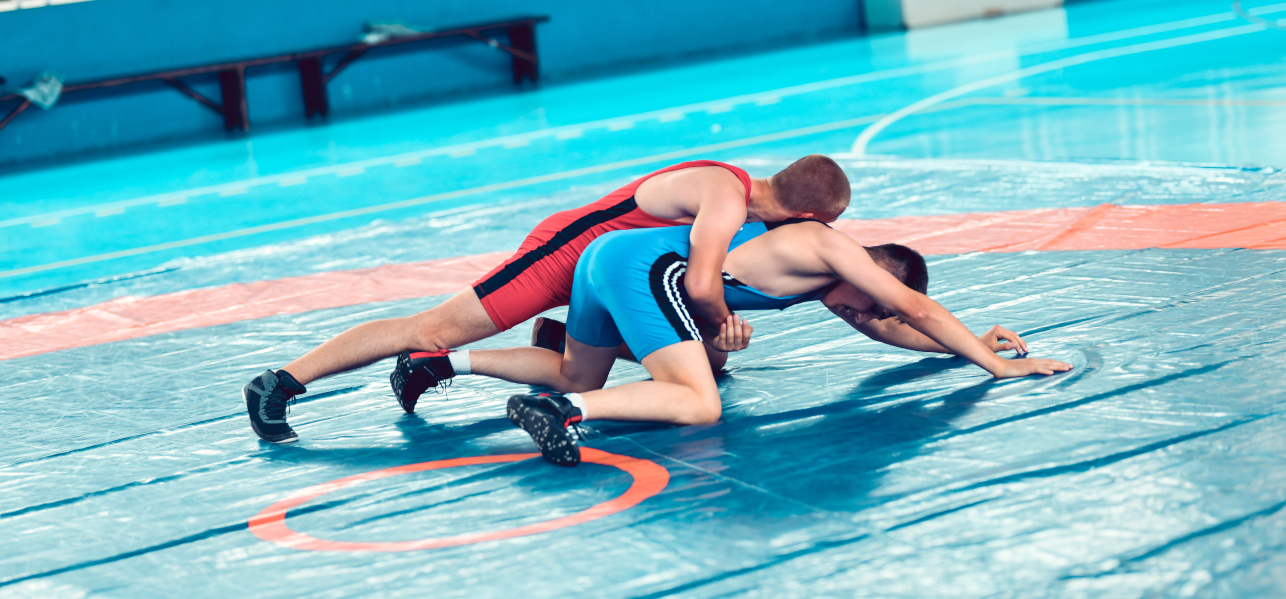A swimmer with shoulder pain is pretty common to anyone who knows the sport. With few exceptions, shoulder pain in a swimmer will be an overuse injury, meaning it builds over time with continuous irritation from the same motions over and over again.
This happens for a few reasons:
- The shoulder is the most mobile joint in the body
- The mechanics of swimming require lots of motion at the shoulder joint
- With increased motion in the joint comes less stability of that joint
- A swimmer can exceed 2,000 strokes for one shoulder in a single workout
That’s a lot of factors!
A few simple tricks can go a long way to keeping shoulder pain from getting to be an injury that keeps the swimmer from the pool.
The first thing to check when your swimmer comes to you with shoulder pain—or to prevent shoulder pain at all—is their posture. The nature of swimming workouts and dry land activity gives a swimmer very developed pectoral muscles, which they need for stroke efficiency and speed. This can cause those muscles to pull where they attach on the arm and can give a swimmer a rounded shoulder appearance, meaning that the shoulders are coming forward when at rest. Posture like this can pinch important structures in the shoulder, particularly in the anterior (front of the body) portion, which are already more vulnerable. It will also affect structures in the back, which are being stretched and weakened by this posture.
To fix this, have your swimmer focus on straightening up as if a string were being pulled from the torso through the top of the head. Roll the shoulders back to an even position on either side of the body. He or she will not need to throw the shoulders back overly far or puff the chest out, just keep them back in line with the rest of the body. There will be a noticeable difference right away.
In conjunction with the change in posture, swimmers usually also need to put some focus on the scapular stabilizers – the muscles that work in between and around the shoulder blades. These muscles are often weak and cannot function properly without some attention. Most people don’t even think about them.
When practicing good posture, you can feel those muscles fire up. An exercise called scap squeezes can work them even more. While in your good posture position, pretend you are trying to squeeze a penny between your shoulder blades by squeezing those muscles, leaving your arms by your side. Hold the squeeze for 5 seconds, then release.
Both of these techniques can be used throughout the day while your swimmer is doing other things. Practicing good posture and scap squeezes can reduce a number of shoulder problems by introducing proper position and body mechanics. Pain in the shoulder may be common in swimming, but that does not mean swimmers have to “push through it”. There are modifications and options available to keep them from doing making things worse. Being aware is the best way to prevent injury!
At Cincinnati Children’s Sports Medicine, we want to do everything we can to keep your child in the water as much as possible. We want them to swim just as much as they want to swim! Using these tips can help, and we encourage you to actively work to prevent shoulder problems.
At Cincinnati Children’s, we are available help your young athlete and to answer your questions. To make an appointment or speak with a staff member, please contact our Division of Sports Medicine.






Thank you for the information on shoulder pain in swimmers! My son is on the high school swim team and has noticed that his shoulders are stiff and sore a lot. I’ll share these tips with him and see if it makes any difference. Would you recommend seeing an osteopath to help with his posture? https://www.keilorhealthcentre.com.au